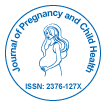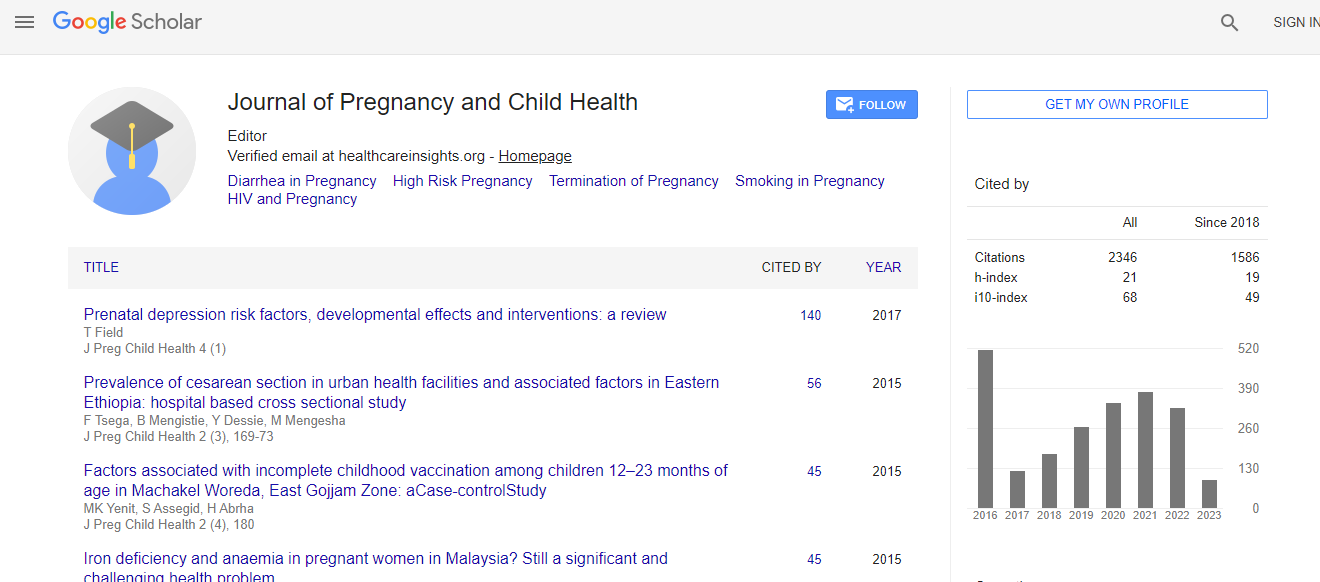Prevalence and Associated Factors of Maternal Distress among Pregnant Women in Laelay-Maichew District, Tigray Ethiopia 2020: A Community Based Cross Sectional Study
*Corresponding Author:Received Date: Nov 13, 2023 / Published Date: Jan 13, 2025
Citation: Haile T, Mebrahtu G, Ayele E, Kidanemariam G, Gebrekidan H (2025) Prevalence and Associated Factors of Maternal Distress among Pregnant Women in Laelay-Maichew District, Tigray Ethiopia 2020: A Community Based Cross Sectional Study. J Preg Child Health 12: 677
Copyright: © 2025 Haile T, et al. This is an open-access article distributed under the terms of the Creative Commons Attribution License, which permits unrestricted use, distribution and reproduction in any medium, provided the original author and source are credited.
Abstract
Introduction: Maternal mental distress such as depression, anxiety, and stress is increasingly recognized for its burden in low-resource countries such as Ethiopia. However, the magnitude of maternal distress in Ethiopia, particularly in the study area, is not well established.
Objective: This study was aimed at assessing the prevalence and associated factors of maternal distress among pregnant women in Laelay-Maichew district, Tigray, Ethiopia.
Methods: A community-based cross-sectional study design was conducted with a total of 580 pregnant women in Laelay-Maichew district, Tigray, Ethiopia, from April 15, 2019 to May 15, 2020. A multi-stage sampling technique was used to select study participants. Data was entered using Epi-Info and cleaned, coded, and analyzed with the Statistical Package for Social Science (SPSS). The binary logistic regression model was used to determine the independent risk factors for maternal distress. Variables that were significant at a p-value of <0.2 in the bivariate logistic regression were entered into the multivariable logistic regression. Finally, a 95% confidence interval and statistical significance were declared at a p-value <0.05.
Results: The prevalence of maternal distress in the study population was 26.7% (95% CI: 22.8–30.2%). Factors significantly associated with maternal distress were: No formal education (AOR=4.08; 95% CI (1.43, 11.61)), history of previous pregnancy and labor complications (AOR=2.65; 95% CI (1.43, 4.89)), history of abortion (AOR=3.58; 95% CI (1.54, 6.16), pregnancy planning (AOR=3.17; 95% CI: (1.69, 5.09)), food insecurity (AOR=4.18; 95% CI (2.38, 7.32), food diversity (AOR=2.38; 95% CI (1.33,4.26)), mid upper arm circumference (AOR=3.33; 95% CI (1.78,6.24)), poor partner support (AOR=2.59 at 95% CI (1.31, 5.09)) and intimate partner violence (AOR=3.48; 95% CI (1.93, 6.28)).
Conclusion: The findings of this study revealed that maternal distress during pregnancy was high. Educational status, food insecurity, pregnancy planning, history of abortion, previous pregnancy and labor complications, intimate partner violence, food diversity, mid-upper arm circumference, and partner support were factors associated with maternal distress.

 Spanish
Spanish  Chinese
Chinese  Russian
Russian  German
German  French
French  Japanese
Japanese  Portuguese
Portuguese  Hindi
Hindi 
